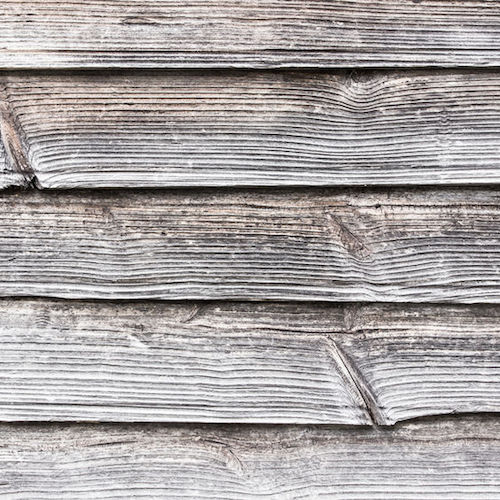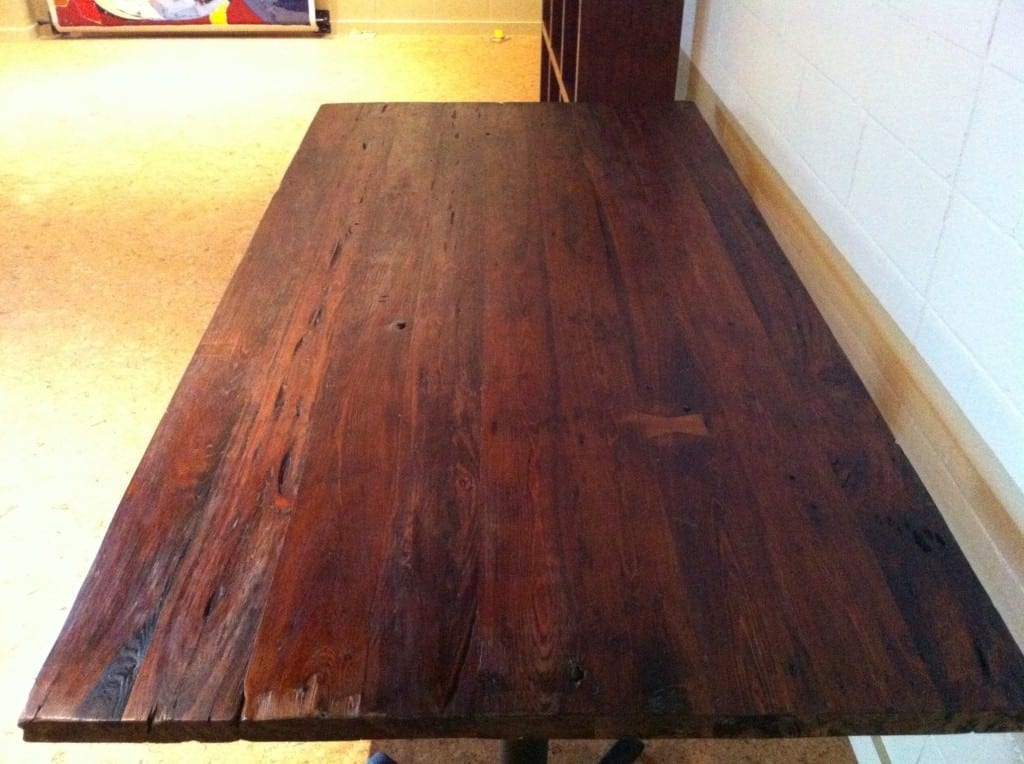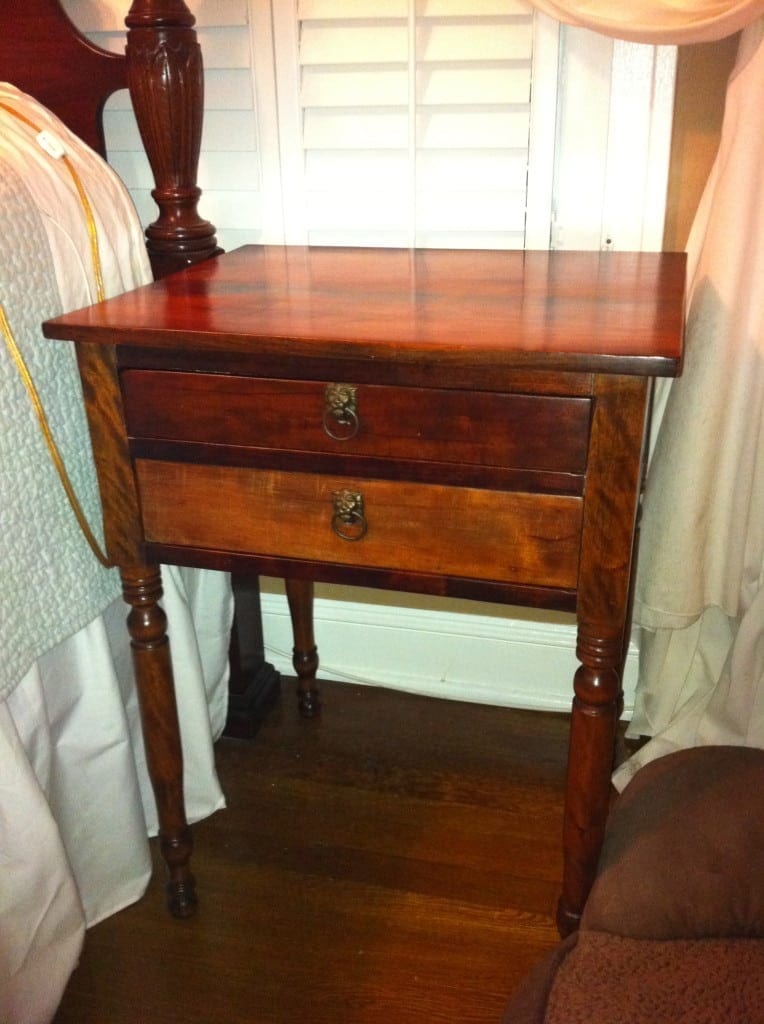
Wood is an extraordinary building material that can last hundreds of years, especially old-growth wood, when given a little care. Just like any material, when exposed to the elements, it can slowly degrade. But, you can bring old wood back to life by using boiled linseed oil and prepare it for a few more decades of service life.
Don’t let grey, weathered wood convince you to replace it when all it needs is a little TLC. Other than rot or physical damage, boiled linseed oil is a great treatment for old dried out wood. It also makes a fantastic pre-treatment before painting to extend the life of your paint job.
What Is Boiled Linseed Oil?
No, it’s not actually linseed oil that has been boiled. Linseed oil, also known as flaxseed oil, is a colorless to yellowish oil obtained from the dried, ripened seeds of the flax plant. The oil is obtained by pressing the seeds to withdraw the oil. Linseed oil is a very slow drying oil, and so to make it more readily useable, some guys in lab coats mixed a combination of raw linseed oil, stand oil (linseed oil that has been heated to near 300 °C for a few days in the complete absence of air), and metallic dryers to create a product that behaves much the same way, but dries before the cows come home.
How To Revive Old Wood
UV rays break down the fibers in wood, and after enough exposure, wood begins to turn grey from the sun’s effects. Paint and other coatings won’t adhere well to this grey wood, so it’s important to treat the wood before trying to paint again. Follow these few simple steps to revive that old wood and get it ready for some fresh paint or varnish.
1. Sand Lightly
Using something like 120-grit sandpaper make sure there isn’t any dirt or loose wood fibers lingering. Sanding also helps open up the pores of the wood to prepare it for the oil. Wipe off the dust, and you’re ready for oil.
2. Apply Oil
Mix up a 50/50 solution of boiled linseed oil and turpentine. Liberally apply the mixture to the wood using a cotton rag. You can brush it on if you’d like as well, but I prefer a rag. Make sure you apply a good amount to the surface, not just a light coat. The oil will penetrate the wood and soak in quickly. If the surface is still shiny after a couple minutes, wipe off the excess and set your rag out to dry.
Read this post about how to safely deal with rags soaked in boiled linseed oil because if not handled properly, they can spontaneously combust!
Let the oil dry for at least 24 hrs, but 48 hrs is even better. Don’t put a second coat on because with extra coats, the oil can build up on the surface and create adhesion problems with your paint. One coat is more than sufficient.
3. Prime & Paint
Using a good oil-based primer, cover the bare wood after the oil is cured. Using an oil-based primer rather than a latex primer helps create a bond between the boiled linseed oil and oil primer, which gives your paint job an extraordinary bond. Latex primers are water based and don’t work as well with this system. You can finish with a latex finish paint on top of the oil-based primer, but stay away from a latex primer in this situation.
Boiled Linseed Oil as a Finish
Not just a pre-treatment, boiled linseed oil works great as a wood finish itself. It won’t give you a super hard and durable finish like polyurethane or varnish, but with enough coats, boiled linseed oil will eventually build up a beautiful and protective finish. I’ve used it for years, as well as my own custom blends to finish furniture and table tops with great results.
Boiled linseed oil gives a very “close to the wood” finish where you can really feel the wood instead of layers of plastic poly on top. The trick is to add multiple coats over the course of a week or so. Usually giving it about 24 hrs between coats, you’ll build up between 3 and 6 coats of oil depending on how thirsty the wood is.
Boiled linseed oil really brings out the deep rich color of the wood and accentuates the grain. Even less attractive woods look pretty decent after being oiled. Finish the project with a coat of wax for even more protection and you’ll have professional looking results.
Here’s some projects I’ve finished with Boiled linseed oil below.



Founder & Editor-in-Chief
I love old houses, working with my hands, and teaching others the excitment of doing it yourself! Everything is teachable if you only give it the chance.


I have horseshoe pits with pressure treated lumber backstops and pitching platforms. They have dried out considerably in the 3 years since I constructed them and they are starting to chip easily. Would BLO or something else help to rehydrate and restore this wood?
I have the parts for a very old spinning wheel (a great or walking wheel) that is close to 200 years old. It has spent most of the last 100 years in a barn. The wood is very dry and gray, but not deteriorated. I am going to try your method to help preserve the wood.
I am refurbishing some weathered casement windows. Can I stain and seal the wood after the BLO is applied?
I have an old (1950s) rocking horse that I rode for all it was worth when I was little. It is commercially made of painted plywood and has thick springs anchoring it’s “feet” to the frame so I could rock back and forth. I want to give it to my grandkids but am wary, as the wood might split if they use it now. It was unfortunately stored in an attic for years in a hot, humid climate. What would you suggest to feed the wood and restore it to it’s original strength? I thought about opening it so I could feed the wood from the inside. It has a thin, stenciled on coat of paint on the outside. Would your technique of painting on turp/linseed oil penetrate the paint or ruin it? Thanks! Michelle
Several large trees were cut down last fall; some pieces of wood were set aside but have weathered to grey and have some spits in them. Most are cut lengthwise, but I do have one semi-circle that was cut cross-wise. Too late, I got the idea of having a desk nameplate made for someone who would treasure the source. !) is the wood salvageable for such a project and 2) if so, how must the wood be prepared to use? I can’t even find a woodcrafter who can do the project, much less answer my questions.
Want to do this on old window sashes… will linseed oil be OK on exterior wood? Of course, I’ll be priming with oil and painting it with top quality house paint (latex). THoughts, anyone?
Treating the wood with BLO before a pint job is great to condition the wood and extend the life of the coating.
Hello, if I have used 5e finest steel wool on my old cherry table to remove stains, have I ruined it? THE stains are still there. The oil didn’t penetrate.
I am sorry, I used the finest steel wool
I have a 100+ year old baker oak table with three 18″ inserts. the oak is very dry. How do I restore this furniture? thank you for your time, Eva
What does the turpentine do? Can it be applied. Separate from the BLO before applying your mixture?
Turpentine is used to dilute the oil so that it penetrates better. the same effect can be obtained by heating the oil, which reduces it’s viscosity. Heat to 60C (about 150 F), and apply with a brush (too hot to handle). This techniques saves the cost and smell of turpentine. As a professional heritage conservator, I keep a can of turpentine in my shop, but rarely use it.
Love this tip! Thank you Robin!
I’ve spent a year clearing 4 12 foot exterior columns on my 1836 home. I’ve got bare wood finally!!! I never want to do this again. I’m wondering after reading on here ,would BLO be the best option to put on these wood columns? I’ve sanded all the grey, weathered wood smooth.
Is this product safe to use on a mantle above an outdoor fireplace? Does it just need time to dry before using the fireplace?
I have a potting bench that is very gray and weathered. Just how I like it. The top board is fragile do I need yo replace or is there something to strengthen the wood. I want it to stay the weathered gray look.
Excellent article. This is certainly an innovative way of reviving old wooden surfaces.
I have Interior wall of old tongue and grove redwood paneling
which looks dry. I did try Watco Oil but are there other options
to seal a large area and how best to apply?
Aloha, Art
I have two wooden garage doors (probably 30-50 yrs old) that face south.
Grey wood and paint peeled off on the bottom 1/3.
I’d like to recondition the bottom 1/3 before painting.
Sand with at least 120 maybe more.
Coat with BLO.
Let dry for 2 weeks.
Prime with oil-based primer.
Coat with either latex or oil paint.
Same process for my 50+ yr old windows which are in sad condition.
Any issues you see?
Thanks!
Linseed oil paint is available, although hard to sand. It is by far the best paint available, easy to apply (though slow drying like BLO), penetrates the wood, doesn’t peel, lasts a really long time. I’ve only been using it for about six years, but nothing I have painted looks anything but new. My approach is:
Scrape failing paint
Sand lightly
oil as needed
Apply linseed oil paint – 2 coats or more depending on exposure.
I use Allback Linseed Oil Paint, and highly recommend it.
I have an old willow table that we have used on our porch for years but has suffered in a new, hotter and drier climate. It still has bark, so I am disinclined to sand if I can help it. Can boiled or raw linseed oil help restore the wood before it becomes too brittle? Something else? Thanks!
Question
Is it safe to use boiled linseed oil on a wooden frame of a greenhouse?
Thank you
Terry
What are your thoughts on using blo on an old hardwood floor. It’s grey in many areas and the owner doesn’t want to refinish the floors. Would it restore some luster to the floor? Would it affect the possibility of a uniform refinish in the future?
Just moved into a town house with wood burning fireplace (insert). It has a wood mantle and it is so dried out. Will boiled linseed oil be safe. The mantle is a manufactured one but it is wood.
Thank you
Hello, I have two small tables tath were made by my great-grandfather by 1890; one is made of pine and the second one it seems to be white cedar. These tables have been exposed to weathering (mostly the sun,not rain because I live in a desert) for more than 20 years. Some pieces are very damaged, so I have to replace them. In order to restore those tables, which is the best option, raw lineseed oil or the BLO?
I have a 1913 Victorian style farm house that had all the lead based paint ebated approximate 12 yrs ago. The exterior is now greyed and brittle. To sand down to healthy wood at this point would be very labor extensive. Would the BLO provide good adhesion to the greyed wood or do I still need to sand?